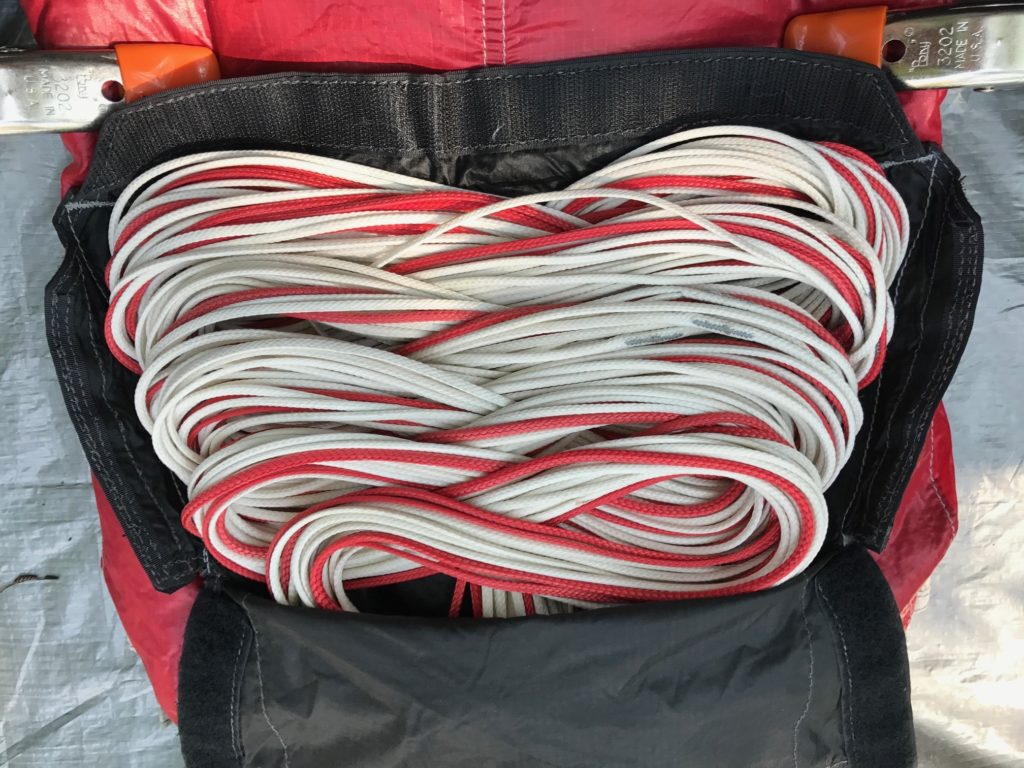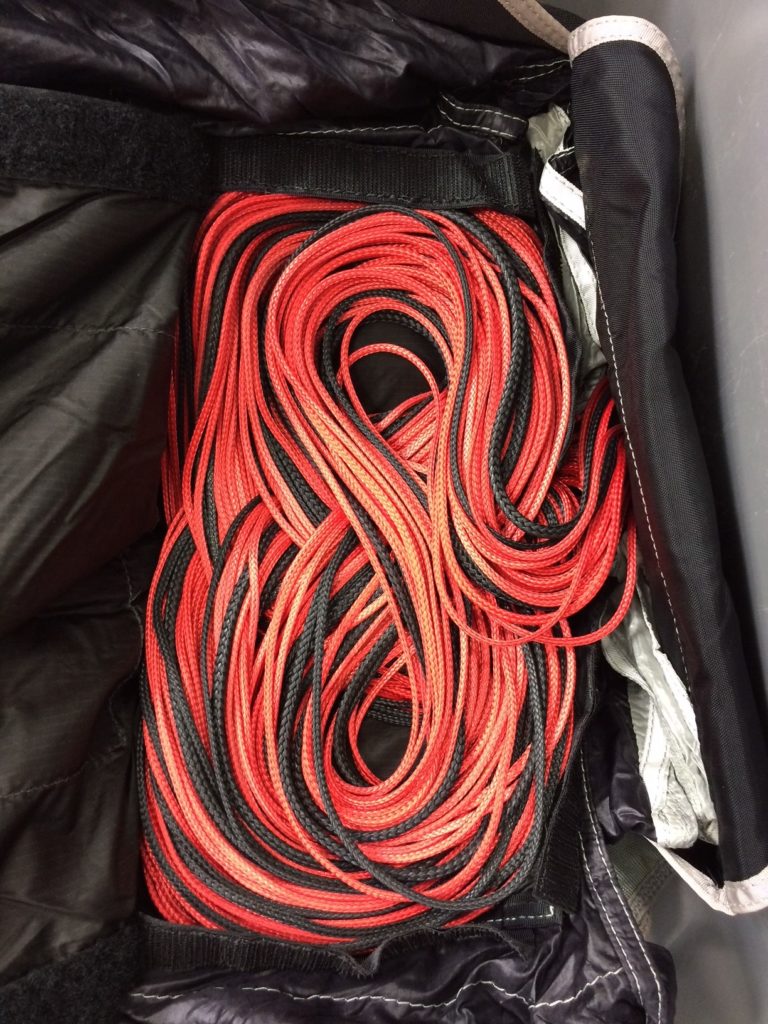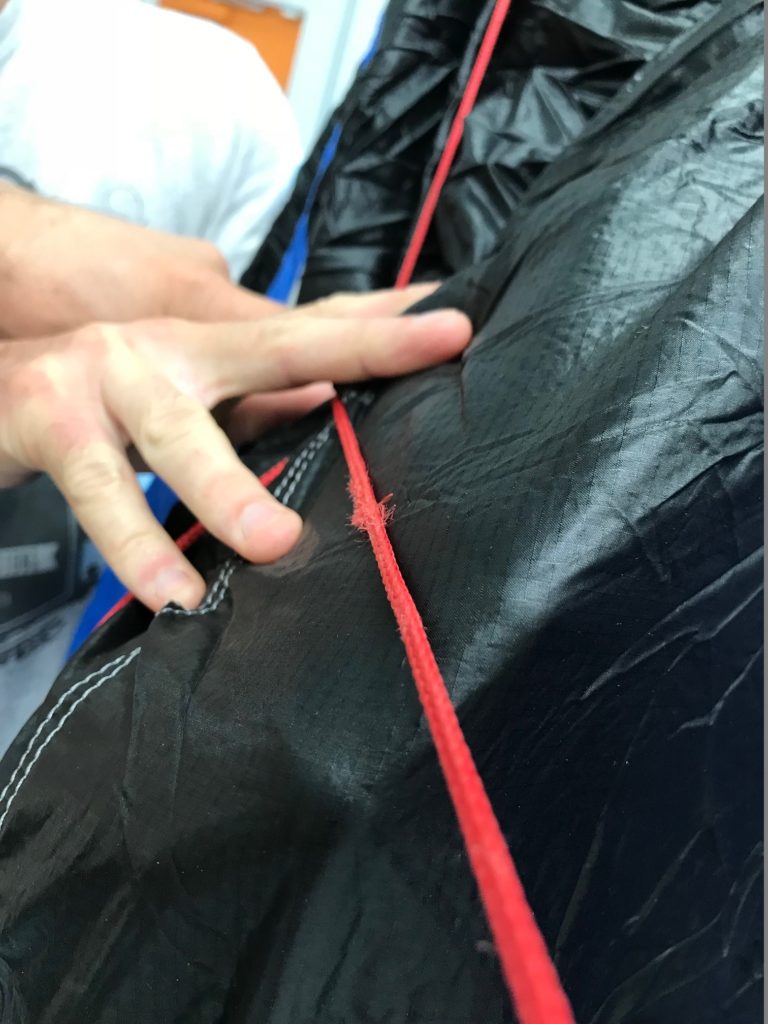In BASE there are many variables over which we have little (or no) control. Packing is not one of them, therefore we should spend extra time and attention when packing to ensure that we’re doing the best possible job.
One step in the packing process we frequently see an inadequate amount of time and attention spent is in the stowing of lines inside the tail pocket. Messy and incorrectly stowed lines can create malfunctions, damage to equipment, and damage to jumpers.
Proper line stows look like this:

Obviously it’s rare that your line stows will be picture perfect, but the most important elements of proper line stowage are shown above:
1. The loops start at the top of the tail pocket, and larger in diameter.
2. As the loops are stowed they get both smaller in size, and closer to the mouth of the tail pocket.
Think about the order you want your lines to feed out of the tail pocket and then set them up for success. By staging them from top-to-bottom, and from large-to-small, you give your lines the best chance of cleanly feeding out of your tail pocket in the proper order.
Unfortunately, we see stows like this ALL THE TIME:

This jumper knew to stage the loops from large-to-small, but missed properly staging from top-to-bottom. This is a problem.
Incorrectly staged line stows can create bottlenecks at the mouth of the tail pocket. Bottlenecks create heat, friction, and occasionally equipment damage. If your line stows are trying to feed out of your tail pocket in the incorrect order, your lines can be dragged across one another at high speed causing burns.
We have found this to be an issue with all tail pocket designs. Top loading tail pockets, traditional tail pockets, various Velcro arrangements, etc. No matter what your tail pocket looks like, if your lines are interacting with one another at high rates of speed they will be damaged.
The most common damage we see from poor line stowage is burns on the upper control lines:


These burns are created as the lines exit the mouth of the tail pocket, at a high rate of speed, over the top of loops that were incorrectly stowed and sitting near the mouth. We’ve also seen damage to tail pockets in more extreme cases, usually around the mouth of the tail pocket.
Take your time, pack a little more slowly, and a little more neatly. It’s better for your equipment, and maybe even your health. Please feel free to contact us if you have questions, we’re here to help!
